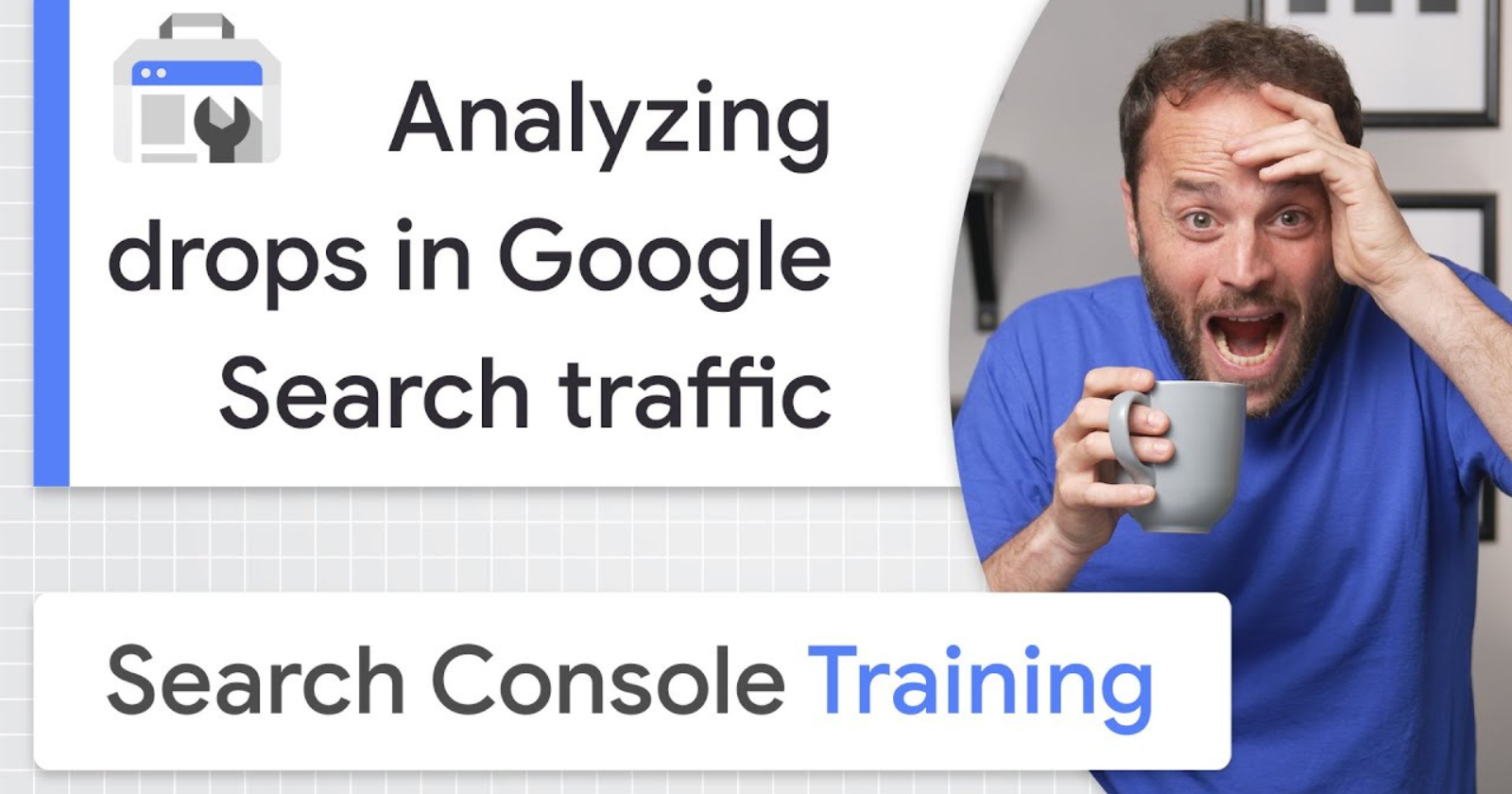Google Search Console Tutorial: Analyzing Traffic Drops

In a YouTube video, Google’s Search Advocate, Daniel Waisberg, offers valuable tips on quickly spotting and analyzing the reasons for a decline in Google Search traffic.
The timing of this informative guide is perfect, as Google just wrapped up its March 2023 core algorithm update. Many people are now evaluating its impact on their websites.
If you’re trying to figure out how the update has affected your site, the Search Console Performance report is an excellent starting point.
Waisberg demonstrates how, when combined with Google Trends, the Search Console Performance report can help you investigate shifts in traffic patterns.
Main Reasons For Organic Traffic Drops
There can be several reasons for a drop in organic traffic. Waisberg highlights these main causes:
- Technical issues: Errors that prevent Google from crawling, indexing, or serving your pages to users. These could be site-level or page-level technical issues.
- Manual actions: If your website doesn’t follow Google’s guidelines, some pages or the entire site may be less visible in Google Search results.
- Algorithm updates: Core updates may change how some pages perform in Google Search over time, leading to a slow decline in traffic.
- Search interest disruption: Changes in user behavior or external influences could affect the demand for certain queries.
- Seasonality effects: Regular traffic fluctuations due to weather, vacations, or holidays.
- Reporting glitches: Sudden major changes followed by a quick return to the norm could indicate a simple glitch.
Analyzing Traffic Drops Using Search Console Performance Report
The Search Console Performance report is an effective tool for understanding traffic fluctuations.
To access the Performance report in Google Search Console, follow these simple steps:
- Log in to the Google Search Console website at search.google.com/search-console.
- Click on the website you want to analyze.
- In the left-hand sidebar menu, click on “Performance.”
You’ll now see the Performance report for your selected property, displaying data such as total clicks, impressions, average click-through rate (CTR), and average position for your website.
Waisberg suggests several ways to analyze the data:
- Expand the **** range to 16 months to view the drop in context and identify any patterns or trends.
- Periodically export and store data to access more than 16 months of information.
- Compare the drop period to a similar period (e.g., the same month last year or the same day last week) to pinpoint the exact changes.
- Explore all available tabs to determine if changes occurred only for specific queries, pages, countries, devices, or Search appearances.
- Ensure you compare the same number of days and preferably the same days of the week.
- Analyze different Search types separately to understand if the drop was limited to Search, Google Images, Video, or News tab.
Using Google Trends For Industry Analysis
Google Trends provides insights into web, image, news, shopping, and YouTube search trends.
Waisberg recommends using it to:
- Analyze general trends within your industry or country to identify changes in user behavior or competing products.
- Segment data by country and category for more relevant insights into your website audience.
- Examine queries driving traffic to your site for seasonal fluctuations or trends.
In Summary
Understanding the reasons behind Google Search traffic drops is crucial. Using the Search Console Performance report and Google Trends, you can identify and analyze the causes of these drops, helping you stay ahead of industry trends and maintain your online presence.
In his next video, Waisberg will explore more ways to analyze search performance, including using a bubble chart.
Featured Image: Screenshot from YouTube, March 2023.
Source: YouTube
Source link : Searchenginejournal.com

![YMYL Websites: SEO & EEAT Tips [Lumar Podcast] YMYL Websites: SEO & EEAT Tips [Lumar Podcast]](https://www.lumar.io/wp-content/uploads/2024/11/thumb-Lumar-HFD-Podcast-Episode-6-YMYL-Websites-SEO-EEAT-blue-1024x503.png)

